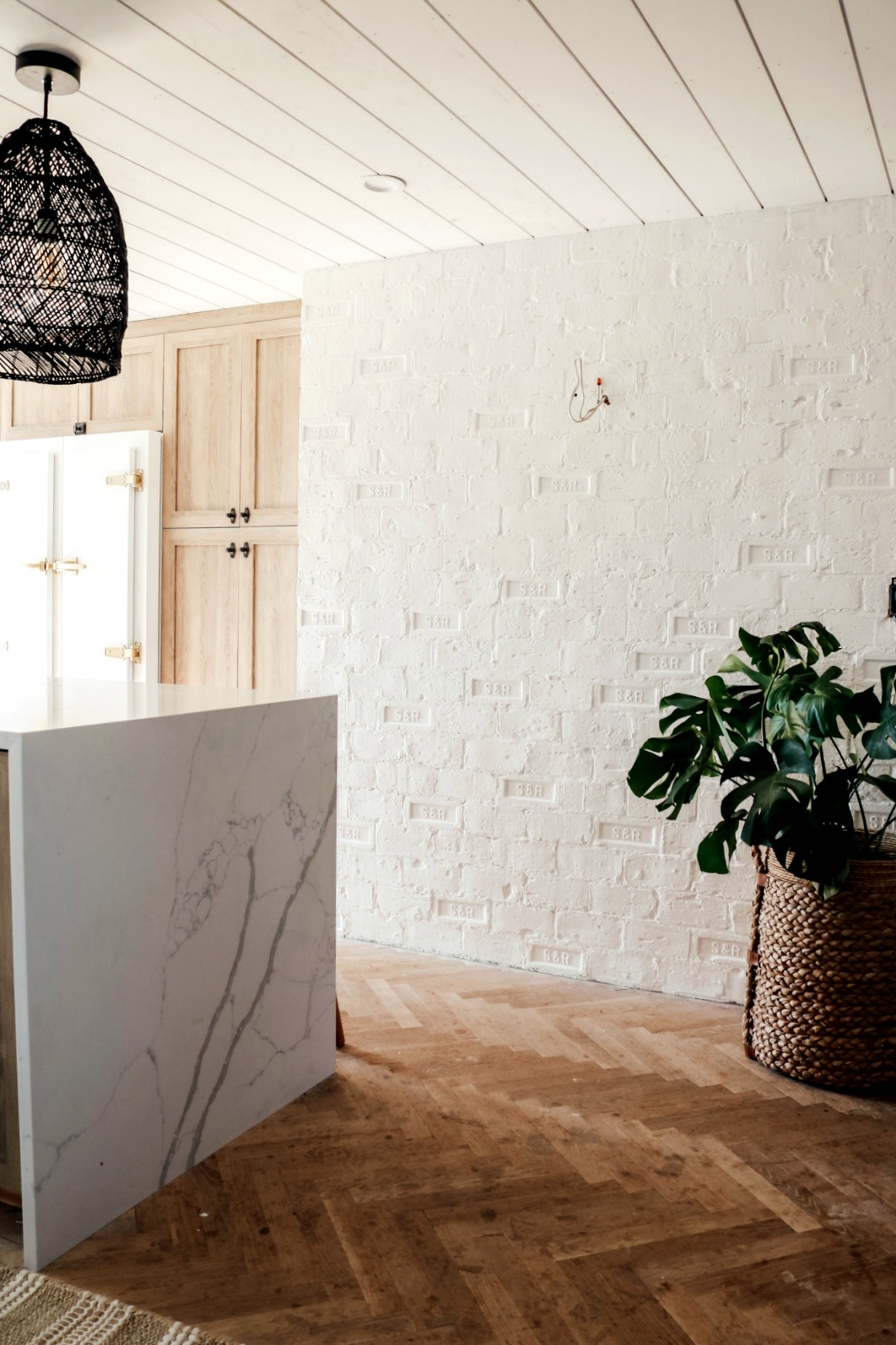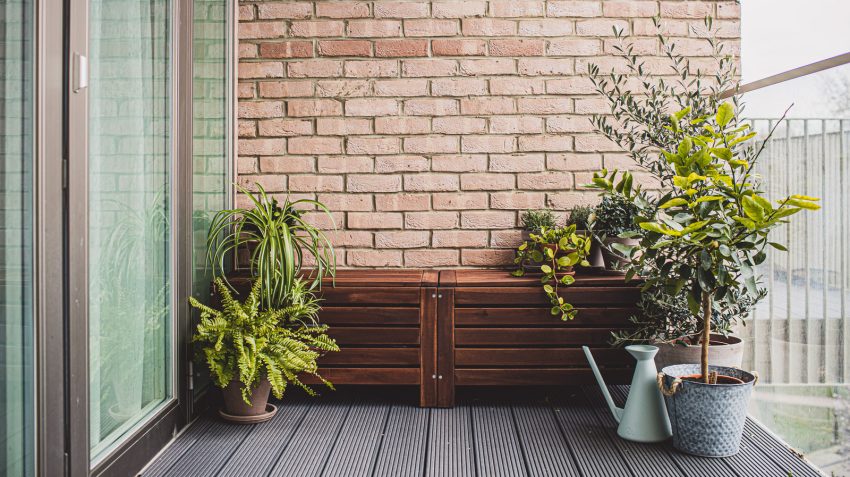How to paint a brick wall? Brick walls exude a timeless charm and rustic appeal, adding character and warmth to any space. However, there may come a time when you desire a change or wish to refresh the look of your interior or exterior brick walls. Painting brick can be a transformative and cost-effective solution to update and revitalize your space while preserving the texture and character of the brick. In this comprehensive guide, we’ll explore the step-by-step process of painting brick walls, including preparation, materials needed, painting techniques, and maintenance tips.

Preparation
Before diving into the painting process, thorough preparation is essential to ensure optimal results:
- Clean the Surface: Remove any dirt, dust, or debris from the brick surface using a stiff brush or vacuum cleaner. For exterior brick walls, consider pressure washing to remove stubborn stains and mildew.
- Repair Any Damage: Inspect the brick for cracks, holes, or mortar damage. Repair any imperfections with a suitable filler or mortar patching compound, and allow it to dry completely before proceeding.
- Protect Surrounding Areas: Cover nearby surfaces, floors, and landscaping with drop cloths or plastic sheeting to protect them from trendy geometric wall paint splatters and drips.
- Prime the Surface: Apply a coat of high-quality primer formulated for masonry surfaces to promote adhesion and ensure uniform coverage of the paint.
Proper preparation is crucial for achieving a smooth and long-lasting paint finish on brick walls.
Materials Needed
Gather the following materials before starting the painting process:
- High-quality paint suitable for masonry surfaces (acrylic latex or elastomeric paint recommended)
- Primer designed for use on brick and masonry
- Paint rollers (medium nap) and brushes (angled for corners and edges)
- Paint tray and liners
- Painter’s tape
- Drop cloths or plastic sheeting
- Stiff brush or vacuum cleaner for cleaning
- Paint sprayer (optional, for large areas)
Selecting high-quality materials is key to achieving professional-looking results and ensuring the durability of the painted brick surface.

Painting Techniques
Follow these steps for painting brick walls:
- Apply Primer: Use a paint roller or brush to apply a coat of primer to the brick surface. Work in small sections, starting from the top and working your way down. Allow the primer to dry completely according to the manufacturer’s instructions.
- Cut In Edges: Use a brush to cut in around edges, corners, and other areas that cannot be reached with a roller.
- Paint the Brick: Once the primer is dry, use a paint roller to apply the paint to the brick surface. Apply an even coat of paint, working in a consistent direction to avoid streaks and drips.
- Work in Sections: Divide the wall into manageable sections and work on one section at a time to ensure thorough coverage and avoid drying lines.
- Apply Multiple Coats: Depending on the desired color and coverage, apply multiple coats of paint, allowing each coat to dry completely before applying the next.
- Touch Up: Once the paint is dry, inspect the wall for any missed spots or uneven areas. Touch up as needed with additional paint.
Maintenance Tips
After painting your brick walls, follow these maintenance tips to ensure long-lasting results:
- Clean Regularly: Keep your painted brick walls clean by dusting or wiping them with a damp cloth as needed. Avoid using abrasive cleaners or harsh chemicals that could damage the wall design.
- Inspect for Damage: Periodically inspect the painted surface for any signs of damage, such as chipping, cracking, or peeling. Repair any imperfections promptly to prevent further damage.
- Touch Up as Needed: Over time, painted brick walls may show signs of wear and tear. Touch up any areas of chipped or faded paint to maintain the appearance and protection of the surface.
- Protect from Moisture: Ensure that the painted brick walls are adequately protected from moisture to prevent water damage and mold growth. Consider applying a waterproof sealant or paint sealer for added protection.

How to choose materials for painting walls
Choosing the appropriate materials for painting walls is crucial for achieving professional-looking results and ensuring the longevity of the paint finish. With a wide array of products available on the market, selecting the right materials can seem overwhelming.
1. Selecting Paint
Paint selection is perhaps the most critical aspect of any wall painting project. Consider the following factors when choosing paint:
- Type of Paint: Decide between different types of paint, such as latex, acrylic, oil-based, or water-based paints, based on your preferences and the surface to be painted.
- Finish: Choose the desired finish, such as flat, eggshell, satin, semi-gloss, or gloss, depending on the aesthetic and functional requirements of the space.
- Color: Select colors that complement the overall design scheme and ambiance of the room.
2. Primer
Priming the walls before painting is essential for promoting adhesion, improving coverage, and enhancing the durability of the wall paint. Consider the following when choosing a primer:
- Compatibility: Select a primer specifically formulated for the type of surface you are painting, whether it’s drywall, wood, masonry, or metal.
- Purpose: Determine the specific purpose of the primer, such as stain-blocking, sealing porous surfaces, or promoting adhesion, based on the condition of the walls and the desired outcome.

3. Brushes and Rollers
The quality of brushes and rollers significantly influences the finish and efficiency of the painting process. Consider the following factors when selecting brushes and rollers:
- Material: Opt for high-quality brushes and rollers made from synthetic or natural fibers, depending on the type of paint and surface texture.
- Size and Shape: Choose brushes and rollers of appropriate sizes and shapes for different areas of the wall, including corners, edges, and large surfaces.
4. Other Essential Materials
In addition to paint, primer, brushes, and rollers, several other materials are essential for a successful wall painting project:
- Painter’s Tape: Use painter’s tape to protect trim, baseboards, and other surfaces from accidental paint splatters and drips.
- Drop Cloths: Lay drop cloths or plastic sheeting to protect floors, furniture, and fixtures from paint spills and splatters.
- Sandpaper: Keep sandpaper on hand for smoothing rough surfaces, removing imperfections, and preparing the walls for painting.
Conclusion
Painting brick walls can be a rewarding DIY project that transforms the look and feel of your space. By following the steps outlined in this guide, including thorough preparation, selecting the right materials, employing proper painting techniques, and implementing regular maintenance, you can achieve professional-looking results that enhance the beauty and longevity of your brick walls. Whether you’re updating interior accents or refreshing exterior facades, painting brick offers endless possibilities for customizing and personalizing your space while preserving the inherent charm and character of brick surfaces.

